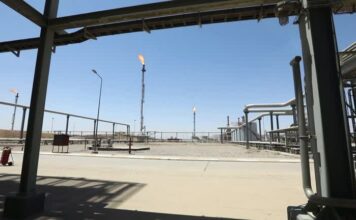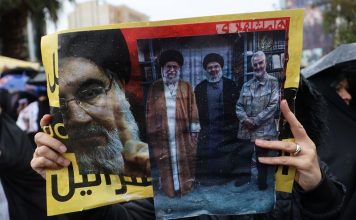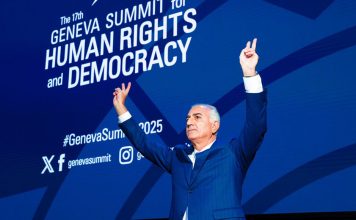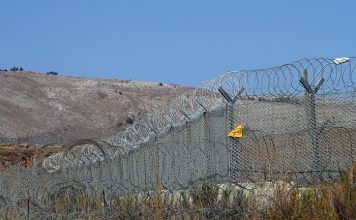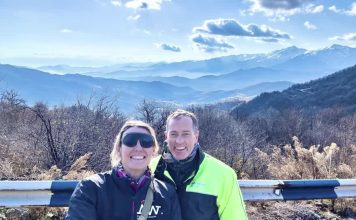By Ahmad Rafat
“What Iranians Want” – by the Iranian-born author and academic Arash Azizi — is one of the first books to be published on the protest movement sparked by the September 2022 killing in Tehran of 22-year-old Mahda Jina Amini while she was in the custody of the Morality Police.
Azizi – who holds a PhD in history and Middle Eastern studies from New York University – is currently a senior lecturer in history and political science at Clemson University in South Carolina.
His previous book “Shadow Commander: Soleimani, US and Iran’s Global Ambition” was a critical success and translated into multiple languages. His new book, “What Iranians Want,” is published by One World in Britain.
What does this book, one of the first to be written after the Iranian protest movement of 2022-3, convey to the non-Iranian reader?
What I wanted to do with the book is to show the extent and breadth of the Iranian civic and freedom movements. Many people around the world know how nasty the Islamic Republic is. They know about the regime’s repression at home and its malign activities abroad. But what do they know about the men and women who have resisted this regime and fought it in so many different ways for so many years?
The book also tries to answer the questions: Why are Iranians risking so much, including their life, to fight against the regime? What is that they want? What Iran do they want to build?
I have tried answering these questions by looking at the visions of those Iranians who have been at the forefront of the struggle for change. To answer your question more directly, I hoped to write about the reasons for the revolt through a more general exploration of Iranians’ fight against the regime.
Women are a thread running through your book, even though, in its nine chapters, it tries to touch on the broad themes and issues in Iranian society.
Indeed. That’s because Iranian women have been on the forefront of freedom movements for the past few decades. The large gap between their social achievements and their effectively second-class citizenship provides for this energetic socio-political participation. In fact, I think any book about the Iran of the last few decades, in pretty much any field, will have to include a lot of women!

I was quite surprised that one of the nine chapters of the book is dedicated to an endangered species, the Iranian Cheetah: more specifically, to Piruz, a cub that died just two days before turning 10 months old. Do you really believe that environmental protection is one of the main concerns of Iranian society?
Yes, I do! I start with the story of Piruz and how it became a cause celebre in the midst of the movement. This was a fascinating fact in itself. Why did people care so much about a dead cheetah when human beings were also being killed? As the chapter shows, they also care about dead flamingoes and dried up lakes or rivers. Why? I believe it’s not only because of the environmental destruction caused by the regime’s reckless corruption, but because they see it as symbolic of how this unrepresentative government doesn’t care for Iran as a nation. This is a fascinating fusion of concerns: for Iran as a country, and for its environment.
There is something of a patriotic-environmental movement: of Iranians caring for their country’s environment and seeing in its destruction a sign of national decline that they naturally want to counter. I should say that I am very glad that some of the environmentalists I mention in the book, who were taken as political prisoners, have since been released!
Your book contains no chapters on protests about the economic situation. The ‘Woman, Life, Freedom’ movement was preceded by two other revolts, perhaps less extensive in time and participation, but equally important: in December 2017 and in November 2019, which were economically driven, and led people to call for regime change, paving the way for the protests of 2022.
The 2017 and 2019 protests were crucial indeed. This is especially true of the latter. It will probably be viewed by future historians as a landmark event in Iranian history. It was a moment when a river of blood separated much of the population from the regime.
The 2017 movement also showed that the discontentment with the regime wasn’t limited to the middle classes from large cities but was very widespread around the country.
The reason that these protests don’t occupy a central place in my book is that my focus is on the civic movements that helped articulate the demands of Iranians in the lead-up to the Women, Life, Freedom, Movement. It’s not a narrative history book about how we came to the 2022-2023 movement, but something of a political manifesto that hopes to open up and explore the diverse dimensions of Iranian demands for a better life.
The economic situation is central to many chapters in the book, especially the one on trade unions, but also the last chapter on Sarina Esmailzadeh, one of the young women who was killed in the movement. Her demands for a ‘normal life,’ I believe, had a lot to do with the economic destruction of Iran under the regime.
The views of the press and international public opinion on Iran often do not reflect the reality and are limited to clichés. Do you think that by reading your book non-Iranians will be able to look at the current reality of Iran beyond these clichés?
I hope so. Both this book and my previous book and writings are aimed at giving a picture of Iran that is dynamic and beyond the stereotypes, which conveys a real sense of the place to the reader. This is also what I love about my discipline of history. I think it is intrinsically skeptical of pre-packaged models and stereotypes because life itself doesn’t conform to categories so easily. We need categories and narratives to write, and so I resort to them too. But I hope I haven’t chopped up reality to fit my models.
The book is written in the style of a storyteller and not an analyst. Do you think that those who are not experts on Iranian affairs can better understand Iran with this more mainstream language?
My hope with my books is that they can be of some interest both to people who don’t know much about Iran and those who know a thing or two. I like storytelling, which also comes naturally to me as a historian interested in narratives. I hope that analytical points can be embedded in the stories I tell.
For instance, why didn’t the trade unions grow as much as they could have politically? Why are young Iranian girls and boys risking their lives in the fight against the regime? These are analytical questions and I approach them as such – but also as part of my broader book-length narrative. I don’t see narrative/story and analytical reasoning as contradictory.
In the epilogue of the book you try to answer this question: What’s next? Do you think that the death of Ali Khamenei, the current leader of the Islamic Republic who has just turned 85 and is suffering from prostate cancer, could favor the end of the current religious dictatorship?
[Nobel Peace Prize winner] Shirin Ebadi likes to say that Khamenei will be the last Wali Faqih (Guardian Jurist or the Supreme Leader). I think she is right in a fundamental sense. Even if he dies while the Islamic Republic is still in power and the Assembly of Experts gets to pick a successor in a very orderly fashion, it is quite likely that this successor, whoever he is, won’t actually hold most of the power in the country. He will thus occupy a fundamentally different position than Khomeini and Khamenei did. He will be a weak head of state in thrall to those with real power and might even see his position gradually abolished.
The Islamic Republic is really seeing its twilight. It’s at an ideological dead-end. I think even many of its ardent supporters don’t really believe in it anymore. They are in it for proximity to power and guns. It’s very hard to be able to revive faith in this system. I recently wrote an article for the New York Times where I tried to predict a future for Iran after Khamenei. I think there will be a ferocious struggle for power but, whoever comes on top, will likely make some fundamental changes in the country. This will take it away from the ideals of the Islamic Republic. So, yes, we will likely see the end of the “religious dictatorship” as it exists today. It is also unlikely that the clerical caste would hold much power after Khamenei. They are mostly finished as an important sociopolitical actor.





